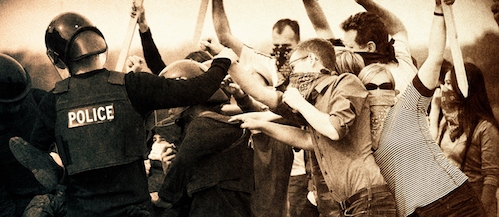It seems like each time you turn on the news or look at your social media feeds, there’s another terrorist attack or violent protest. The world we live in is a scary place, with fringe ideologies creating panic among the public. However, even though we face these risks on a daily basis, we don’t have to accept them as inevitable. We have the opportunity to prepare.
Preparing for these threats begins with mapping out a game plan. You must ask yourself about plans for clearing your rides, midways, and paths in the event of a threat. You also should meet with your committees, the local authorities, and park officials to understand their plans for barricades and crowd control. This way, you can ensure your individual plans work together.
When creating a response plan, it’s hard to know exactly what to include. After all, it’s difficult to imagine the tragedies you see on TV happening at your business. There is always a possibility of an attack, and an emergency event plan is the best way to ensure your staff responds properly in case of an emergency. If you have not built a response plan, you should work on one now and implement it next season.
To begin putting together a plan, you should first make a list of every possible risk you can think of happening at your midway. Then, you should determine ways you can reduce or avoid that risk. Here’s a list of questions to ask about each risk you add to your list:
- Is the exposure to the risk necessary to your operations? If not, you may want to take the necessary steps to eliminate it entirely from your park’s operations
- Can you train and educate your staff to recognize the potential risk and then give them the skills to reduce the risk in the event of an occurrence? If so, you should put together a strategy on how to train each employee on their role in mitigating this risk while on the clock.
- Can things like a physical barrier, increased security, or surveillance be used to reduce the risk or act as a deterrent? If so, you should implement them into your park’s overall risk management strategy.
- Is the risk reduced through the integration and cooperation of civil authorities? If so, you should hold a meeting with the authorities and share your plan and insights with them.
After running through these questions with every risk you put on your master risk-management list, you should be able to develop a plan for how you and your staff will handle the risk should it arise. If you’re holding a special event, be sure that every staff member is up-to-date on any protocols.
If you aren’t sure of how to manage a specific risk, talk with other management teams to see how they might handle the risks that concern you most. You can learn from each other and end up having safer entertainment centers.
Finally, if you aren’t sure where to start, consider hiring an emergency planning consultant. This consultant can put together a realistic plan that your staff will be able to execute in case of an emergency.
The thought of an active shooter incident or a violent incident may seem unfathomable.
Unfortunately, the reality is that you must consider the possibility that such horrific events may occur. Being prepared and ready for scenarios like this is far better than finding yourself caught in an emergency without a plan. Take time with your management team to start asking the tough questions on how you would respond to an attack.
It is much better to have a plan in place and never use it than have a disaster strike and find yourself without a plan.
Drew Tewksbury is the Director of Sales & Marketing at McGowan Allied. A NAARSO-certified safety officer and ride inspector, Drew brings the carnival industry a refreshing new perspective on safety and insurance. You can contact Drew at either 440-263-1882 or by email at dtewksbury@mcgowanallied.com.
